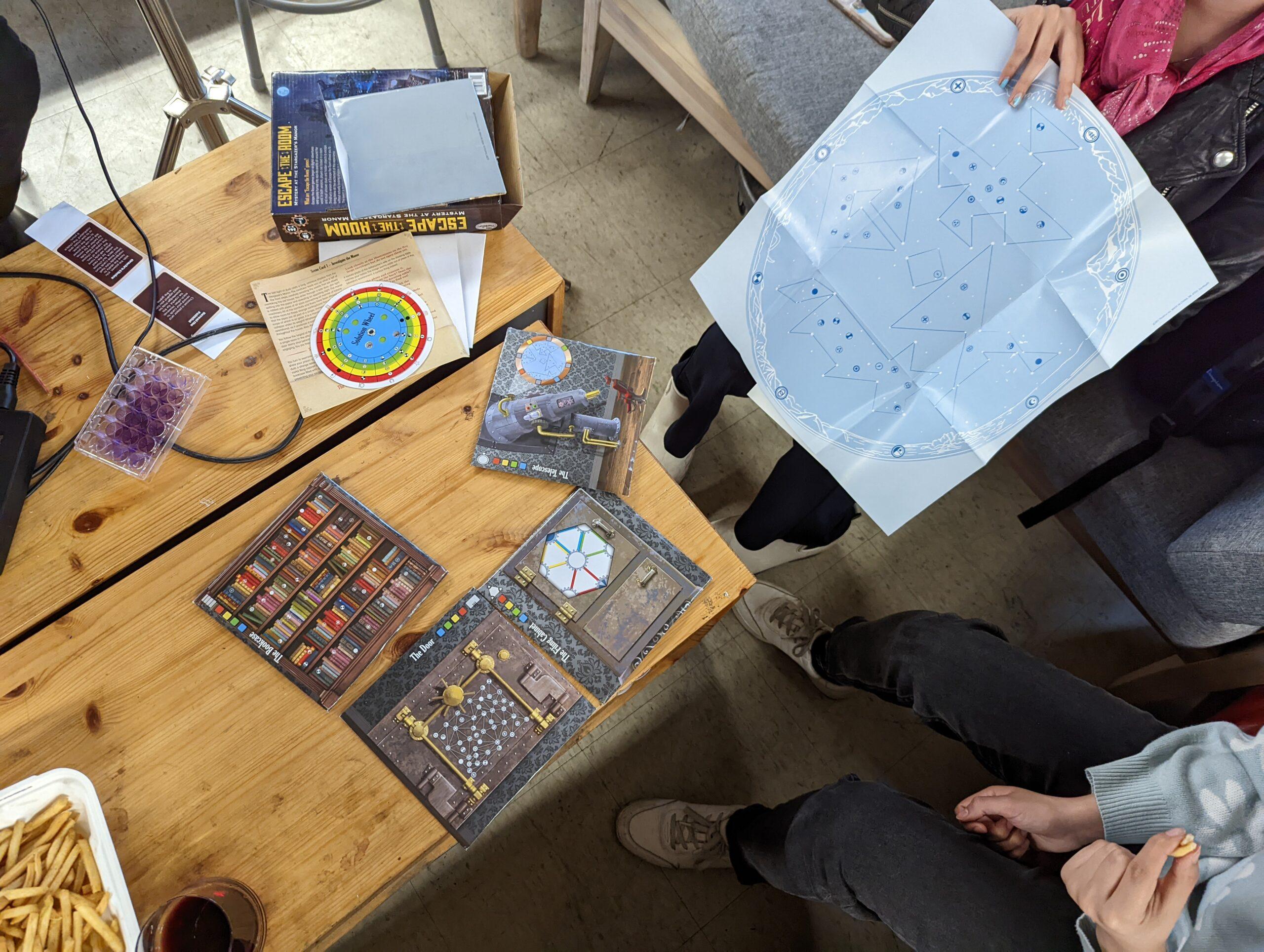
 Mystery at the Stargazer’s Manor is an escape room in a box game released in 2015 by Rebecca Bleau, Nicholas Cravotta, with artist Erwin Madrid. It is a beautifully crafted and illustrated game that had us biting our nails both with its gameplay and narrative.
Mystery at the Stargazer’s Manor is an escape room in a box game released in 2015 by Rebecca Bleau, Nicholas Cravotta, with artist Erwin Madrid. It is a beautifully crafted and illustrated game that had us biting our nails both with its gameplay and narrative.
They mystery starts in 1869. You as the player have been tasked to find out what is happening in the well-known astronomer’s manor that has not been seen since his wife’s passing. You learn about your task through an informative card at the top of the box. There are seven envelopes each illustrated with a different object that you will have to open in order to get to the heart of the mystery. Included is the Solution Wheel which has multiple layers of concentric cards, each a different color, with various symbols and holes all across them. You notice that these symbols are repeated on the envelopes as well.

The first envelop has an image of a dressing table on its front. Your objective is to find the key to open the dresser. The card walks you through how to use the Solution Wheel by aligning symbols to colors. Once you have the right alignment, you see two keys illustrated through the holes in the middle card. The card tells you you have found the key and are able to open the envelop. It tells you ominously, “you are now on your own”.
What a delightful way to introduce this first loop. When you first start out, you know the Solution Wheel must be a way of deciphering some clues but the instructions solidify it for you. The instructions tell you how you can spin the wheels to align it based on the cryptic messages and clues laid around. Because this isn’t a game played with an AI that could show you the feedback, the instructions are key in letting you know when you have solved it and what the feedback really is. The clues are never the same but the underlying method of solving stays the same so you can master the skill of using the wheel through repeated loops at every level.

The game, however, is meant to only be played once. Each level unlocks a piece of the narrative that keeps you hooked to the game and motivates you to keep going. You learn that the astronomer’s wife died in a hot air balloon that he himself built for instance. This gives you an insight into the guilt the astronomer must’ve felt. You learn the machine that’s been causing ruckus across the town is actually a time machine. These revelations get more and more intense. You’ll have to trust me because I don’t want to drop any spoilers here.
I see these narrative nougats as part of the arcs that repeat across the game. When you first hear them, they’re astonishing and hook you to find out more. But once you’ve discovered them, you can’t unlearn them and thus, you can’t get the same sense of wonder.



